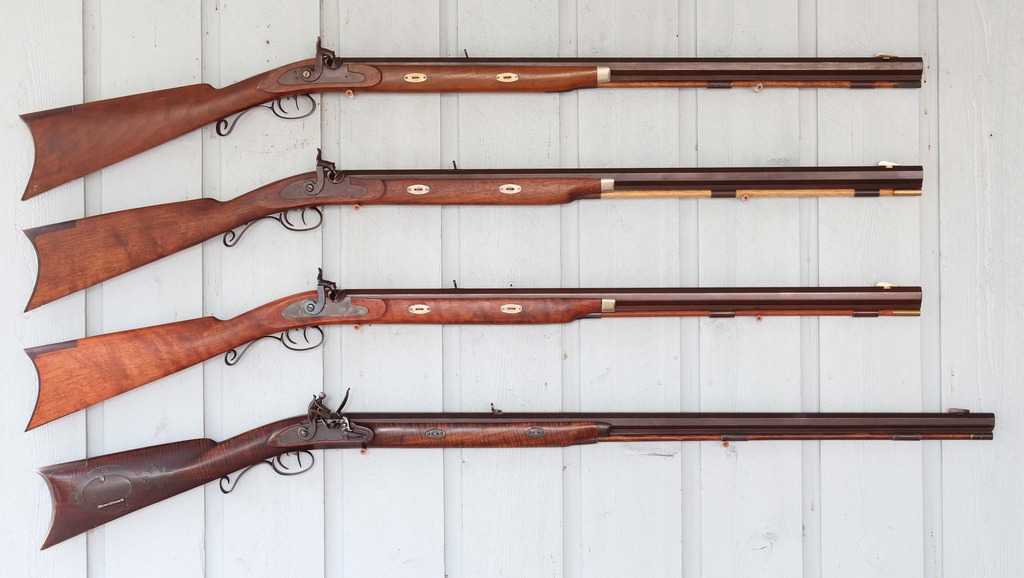I can think with TC and similar they Aimed at a market that wanted old style but not a copy and with modern features that looked sharp. So sights and coil springs and handy machine fast makes sense, and they make good solid guns...
I agree. There weren't that many serious students of the American longrifle in the 1960s and early 70s. People didn't really know what an original Kentucky rifle or a Hawken rifle should look like.
I did some more reading on the origins of Thompson Center to refresh my memory. They started out much smaller than I had recalled. Assuming Wikepedia is resonably accurate on this subject, Warren Center designed his Contender pistol in his basement. He started looking for a company to manufacture it and found K.W. Thompson Tool Company. They formed a partnership and formed a new company that became Thompson/Center Arms Company and introduced the Contender single shot pistol in 1967. Warren Center was also the sole designer of the TC Hawken, which was the second firearm the company produced and came out in 1970.
The company was located in Rochester, New Hampshire, so I can see why Warren Center didn't have easy access to an original Hawken. It's conceivable that the only muzzleloaders he saw were brass mounted longrifles and New England half stock target rifles that could have also been brass mounted.
...Should you look at guns like the Bess or Charley that was made for bicentennial reinactors, one can pick those apart but they are “pretty close”. You have to get in to the weeds to find it’s problems.... I can understand that...
I agree. The Italian gun makers did a better job on military arms and mass produced arms like Colt cap & ball pistols and Winchester lever actions. There were a lot more originals around to study and copy plus they didn't exhibit the wide variability that original Kentucky and Hawken rifles did.
...Things like the navy arms, Dixie rifle was looks vs cost and sell ability. Here on a traditional forum we have plenty of threads about people who worry a traditional long barrel won’t be handy in the woods. People today are used to 18-26” guns...
That easily explains the "carbine" Kentucky rifles.
...Now the Ithaca isn’t a perfect copy.... that’s ok it’s an over the counter gun, you get what you pay for. Back in the day a great copy made by a good gun builder was five times more... I know which one I would have bought...
The Ithaca Hawken was as close to an original as one could get in a mass produced rifle. Ithaca saw an opportunity to buy Bud Brown's business--Cherry Corners Mfg. Co. Cherry Corners had built up a complete parts set or kit for the Hawken. They were reasonably well designed parts, especially the lock and breech, and made a decent replica of a late S. Hawken rifle.
Below is a custom Hawken built in April 1976 using all Cherry Corners parts. Note the bright metal escutcheons and nose cap. Baird's book showed pictures of a couple original Hawken rifles that had pewter nose caps. There were some magazine articles that showed some others. Builders and shooters back then thought that pewter nose caps and German silver escutcheons were common on original Hawken rifles.
Below is an Ithaca Hawken. Ithaca used Bud Brown's Cherry Corner molds and tooling for the metal parts, but redesigned the stock. They had Reinhart Fajen shape and pre-inlet the stocks. The main criticism I have of the Ithaca Hawken is that they left too much wood around the lock panel. Some may criticize the aluminum nose cap, but you have to look pretty close to realize it isn't German silver or pewter. It doesn't bother me.
As I show on my
website, Leonard Allen either sent a custom rifle built with Cherry Corners parts (similar to the one above) or an Ithaca Hawken to Uberti in Italy as a pattern for the Uberti Santa Fe Hawken. The lock plate and internal parts are almost interchangeable. The top lock is from a factory finish Uberti Hawken and the bottom lock is from a Uberti Hawken kit. The middle lock is a Cherry Corners lock.
For further comparisons, the top rifle in the picture below is an Ithaca Hawken, the next two are a Western Arms Jedediah Smith Commemorative Hawken by Uberti and a Western Arms Santa Fe Hawken by Uberti.
The bottom rifle in the photo above was made in the late 1970’s by an amateur builder from Rifle, CO. It has a tapered, 1” to ⅞”, GRRW barrel that is 36” long. The lock is a late 1970’s era L&R flintlock Hawken lock. The rest of the components are from Art Ressel’s Hawken Shop.









